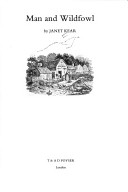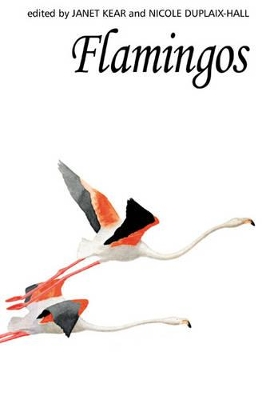Poyser Monographs
3 total works
The involvement of humans with ducks, geese and swans has probably been closer than with any other group of birds, today and for several millenia past. This involvement, in its many aspects, is the theme of this compelling and readable account by an Assistant Director of the Wildfowl and Wetlands Trust. Dr Kear ranges widely, from a summary of the taxonomy and natural history of wildfowl, through a history of domestication world wide, to wildfowling, decoys, conservation and captive breeding, conflicts with agriculture, and wildfowl in legend and literature. Throughout, the text abounds with little-known facts and insights to intrigue the general reader and expert alike - a reflection of the author's wide reading and affection for her subject. Jacket illustrations by Joe Blossom
An international gathering of scientists from a variety of disciplines met at The Wildfowl Trust, Slimbridge, from 10-12 July 1973, to report on the world situation, in the wild and in captivity, of the six types of flamingos. The occasion was the International Flamingo Symposium, called to discuss problems encountered in flamingo conservation and research, and participants came from North and South America, Africa, the Middle East and Europe.
Flamingos' thirty-nine chapters derive from papers delivered at the Symposium. They form four sections: Populations, Ecology and Conservation; Flamingos in captivity; Ethology and Taxonomy; Flamingo Physiology - in addition there are appendices of biological and other information, a comprehensive bibliography,and an Introduction by Sir Peter Scott.
Flamingos, one of the oldest bird groups alive today, are also among the most popular and common of zoo animals, and part of the book is concerned with the problems of .breeding and rearing the birds in captivity, and the stress and disease to which they can be prone. One of the aims of the Symposium and of the book is to disseminate the knowledge that will help improve captive conditions.Hopefully, greater success in breeding from captive birds may ensure that fewer of those born to the wild will be deprived of their freedom. Sir Peter Scott in his Introduction believes that within ten years zoos should be breeding all the flamingos they need.
Approximately half of the book is concerned with populations in the wild, with field studies and conservation, and there are reports from all but one of the major population areas.
Jacket illustration by lan Willis
Flamingos' thirty-nine chapters derive from papers delivered at the Symposium. They form four sections: Populations, Ecology and Conservation; Flamingos in captivity; Ethology and Taxonomy; Flamingo Physiology - in addition there are appendices of biological and other information, a comprehensive bibliography,and an Introduction by Sir Peter Scott.
Flamingos, one of the oldest bird groups alive today, are also among the most popular and common of zoo animals, and part of the book is concerned with the problems of .breeding and rearing the birds in captivity, and the stress and disease to which they can be prone. One of the aims of the Symposium and of the book is to disseminate the knowledge that will help improve captive conditions.Hopefully, greater success in breeding from captive birds may ensure that fewer of those born to the wild will be deprived of their freedom. Sir Peter Scott in his Introduction believes that within ten years zoos should be breeding all the flamingos they need.
Approximately half of the book is concerned with populations in the wild, with field studies and conservation, and there are reports from all but one of the major population areas.
Jacket illustration by lan Willis
Dr Janet Kear, Assistant Director of the Wildfowl Trust and Curator of its Martin Mere Reserve, and Professor Andrew Berger of the University of Hawaii, have written a timely and absorbing account of the recent history of the Hawaiian Goose, or Nene, its descent to near extinction, its eleventh hour rescue and current restoration to the wild. The species declined from an estimated population of 25,000 in Hawaii in the 18th century to less than fifty birds in the 1940s. Today, thanks largely to the extended breeding programmes at Slimbridge and Pohakuloa, there are probably more than 2000 Hawaiian Geese in the world. The achievement is justly applauded and well-known, but whether this impressive experiment in conservation has been truly successful will not be clear until it becomes evident that the released birds can maintain a breeding population in the wild. As the authors explain, the outcome is far from predictable.
The causes which led to the species' decline and the hazards and difficulties faced by the reintroduced population are discussed at length, but the core of the book is the propagation programmes at Slimbridge and Pohakuloa, and the problems and successes they brought during many years of patient work. For the conservationist and aviculturalist the accounts of captive breeding under headings such as infertility, diet, longevity, mortality and the effects of foster mothers, geographical latitude and genetic strain, will be essential reading. Appropriately, Sir Peter Scott, whose imterest and involvement in the rescue of the Hawaiian Goose was of prime importance, is one of the artists whose drawings supplement the text. There is also a colour frontispiece and 24 monochrome plates.
The causes which led to the species' decline and the hazards and difficulties faced by the reintroduced population are discussed at length, but the core of the book is the propagation programmes at Slimbridge and Pohakuloa, and the problems and successes they brought during many years of patient work. For the conservationist and aviculturalist the accounts of captive breeding under headings such as infertility, diet, longevity, mortality and the effects of foster mothers, geographical latitude and genetic strain, will be essential reading. Appropriately, Sir Peter Scott, whose imterest and involvement in the rescue of the Hawaiian Goose was of prime importance, is one of the artists whose drawings supplement the text. There is also a colour frontispiece and 24 monochrome plates.


